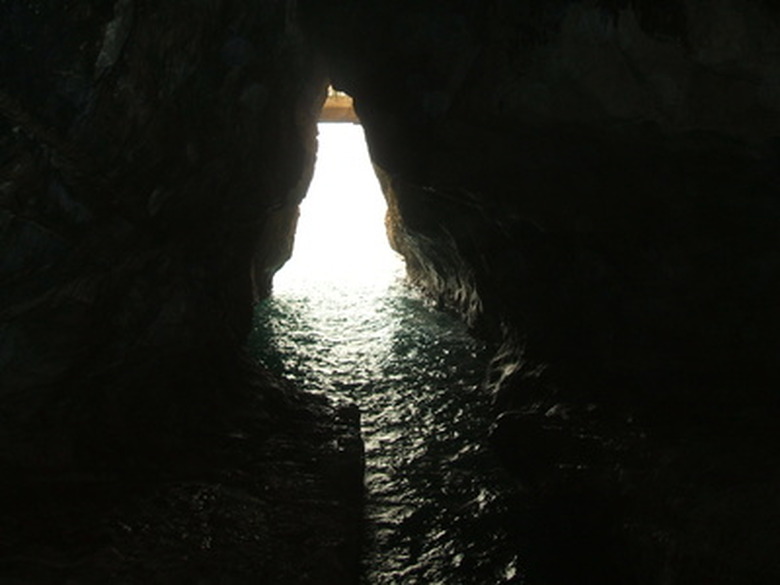Plants That Live In Caves
Cave structures are divided up into three zone based on the amount of sunlight extending into each. The amount of sunlight in the entrance zone is unmitigated by the overhang of the cave entrance, meaning local plants and wildlife abound. The dark zone in the very back of the cave hosts no sunlight whatsoever and as such no plants can survive there. The twilight zone hosts low light levels in which mosses, ferns and other specialized species of plants can thrive.
Mosses
Mosses make up a family of 12,000 species and, taxonomically speaking, are most closely related to liverwort. But where liverwort only has a single footlike structure called a rhizoid to anchor it to a surface, moss has many of them. Moss lacks seeds, true leaves or flowers, and makes do with long, soft, spongy protuberances that contain small amounts of chlorophyll to perform photosynthesis. They also lack cuticles, the waxy leaf covering that protects them from dehydration. For that reason they only grow in areas of high moisture and low sunlight. Most species of moss lack common names because they appear similar except upon dissection, but the proper names of some species found in caves are Orthotrichum truncato-dentatum, Pleurozium schreberi, Ozobryum ogalalense, Sphagnum russowii and Andreaea kilimandscharica.
- Cave structures are divided up into three zone based on the amount of sunlight extending into each.
- Most species of moss lack common names because they appear similar except upon dissection, but the proper names of some species found in caves are Orthotrichum truncato-dentatum, Pleurozium schreberi, Ozobryum ogalalense, Sphagnum russowii and Andreaea kilimandscharica.
Ferns
Ferns encompass a group of 12,000 species of true plant. They have vascular systems, but lack the ability to reproduce through seeds. Instead, they use spores in a complex two-generation process in which alternate generations are either in the diploid sporophytic phase or the haploid gametophytic phase. Because of the use of spores, moist environments tend to be more able to host ferns. All ferns are photosynthetic, frondlike leaves growing by the end shaped in a tight roll called a crozier, slowly unrolling and expanding. The fronds are high in protein and other nutrients, which is vital to invertebrate and minor mammalian life in cave environments. Depending on the climate and surrounding soil pH, possible cave ferns include brake fern (Pteris cretica), bird's nest fern (Asplenium nidus), ebony spleenwort (Aplenium platyneuron) and water horsetail (Equisetum fluviatile).
- Ferns encompass a group of 12,000 species of true plant.
- The fronds are high in protein and other nutrients, which is vital to invertebrate and minor mammalian life in cave environments.
Liverworts
There are roughly 8,000 species of liverwort, all of which are considered, along with mosses and hornworts, as bryophytes. Liverworts are among the earliest land-dwelling plant known, having made the transition from water-dwelling algae sometime in the Devonian Era almost 4 million years ago. Each liverwort is little more than a series of branching green ribbons, as there is negligible distinction between root, stalk or leaves. They lack connective tissue, vascular systems or stomata that would enable them to stop losing moisture to the environment. As such, liverworts can only survive in extremely dank, moist, low-light environments, making them ideal cave-dwellers.
References
- "The Biology of Caves and Other Subterranean Habitats"; David C. Culver and Tanja Pipan; 2009
